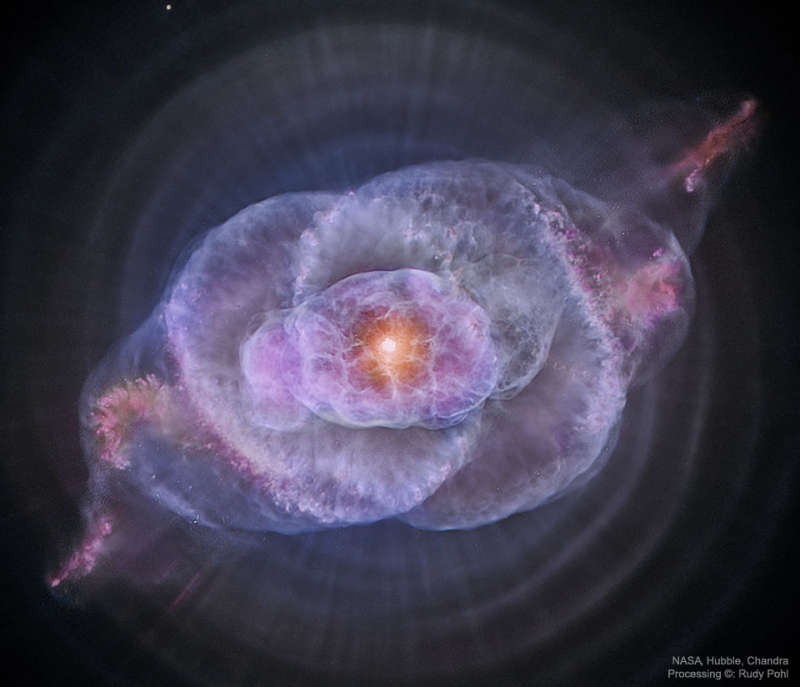
|
Credit & Copyright: NASA,
ESA,
Hubble Legacy Archive;
Chandra X-ray Obs.;
Processing & Copyright: Rudy Pohl
Explanation:
To some it looks like a cat's eye.
To others, perhaps like a giant cosmic
conch shell.
It is actually one of brightest and most highly detailed
planetary nebula known,
composed of gas expelled in the brief yet
glorious phase near the end of life of a Sun-like star.
This nebula's dying central star may have produced the outer circular
concentric shells
by shrugging off
outer
layers in a series of regular convulsions.
The
formation of the beautiful, complex-yet-symmetric
inner structures,
however, is not well understood.
The
featured image is a composite of a digitally sharpened
Hubble Space Telescope image with
X-ray light
captured by the orbiting
Chandra Observatory.
The exquisite floating space statue spans over half a
light-year across.
Of course,
gazing into this Cat's Eye,
humanity may well be seeing
the fate of our sun, destined to enter its own
planetary nebula
phase of evolution ... in about 5 billion years.
Processing & Copyright: Rudy Pohl
APOD in world languages:
Arabic,
Bulgarian,
Catalan,
Chinese (Beijing),
Chinese (Taiwan),
Croatian,
Czech,
Dutch,
French,
French (Canada),
German,
Hebrew,
Indonesian,
Japanese,
Korean,
Montenegrin,
Polish,
Russian,
Serbian,
Slovenian,
Spanish,
Taiwanese,
Turkish,
Turkish,
and
Ukrainian
|
January February March April May June July August September October November December |
| ||||||||||||||||||||||||||||||||||||||||||||||||
NASA Web Site Statements, Warnings, and Disclaimers
NASA Official: Jay Norris. Specific rights apply.
A service of: LHEA at NASA / GSFC
& Michigan Tech. U.
Based on Astronomy Picture
Of the Day
Publications with keywords: NGC 6543 - Cat's Eye Nebula
Publications with words: NGC 6543 - Cat's Eye Nebula
See also:
